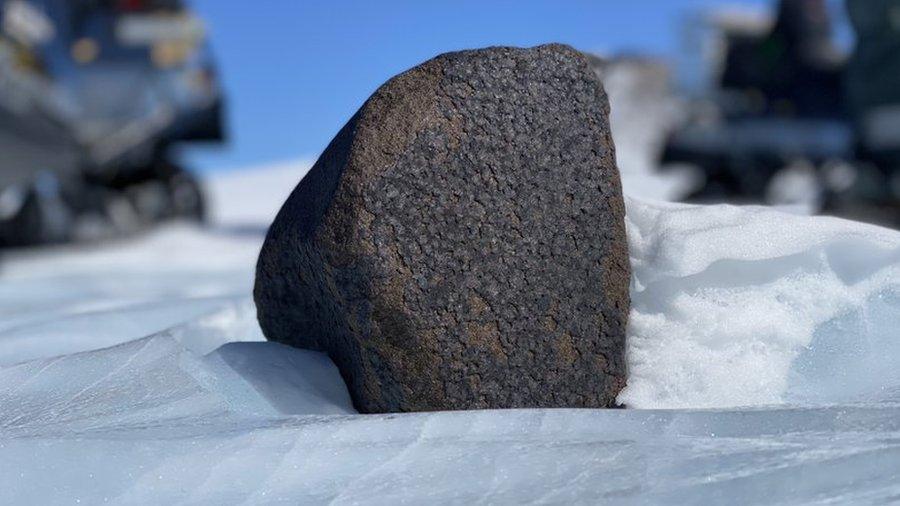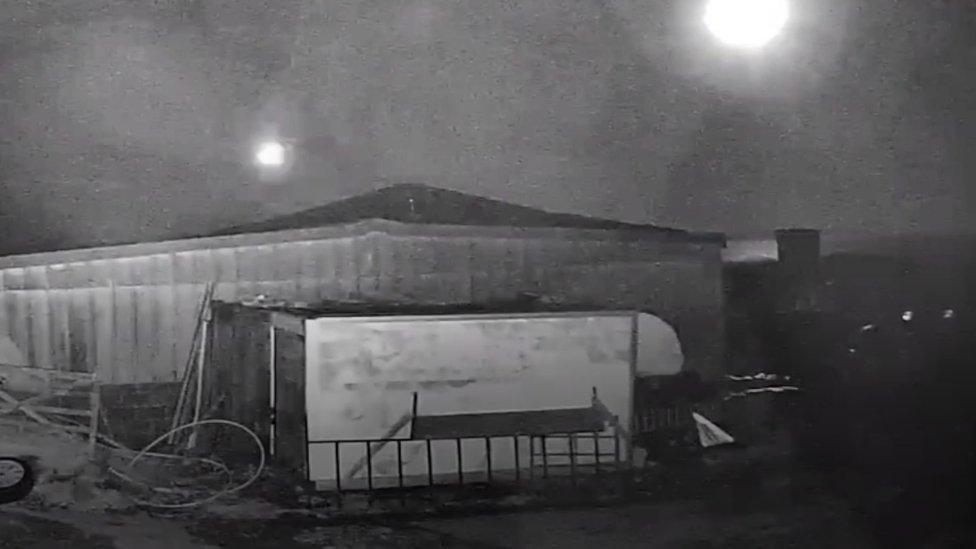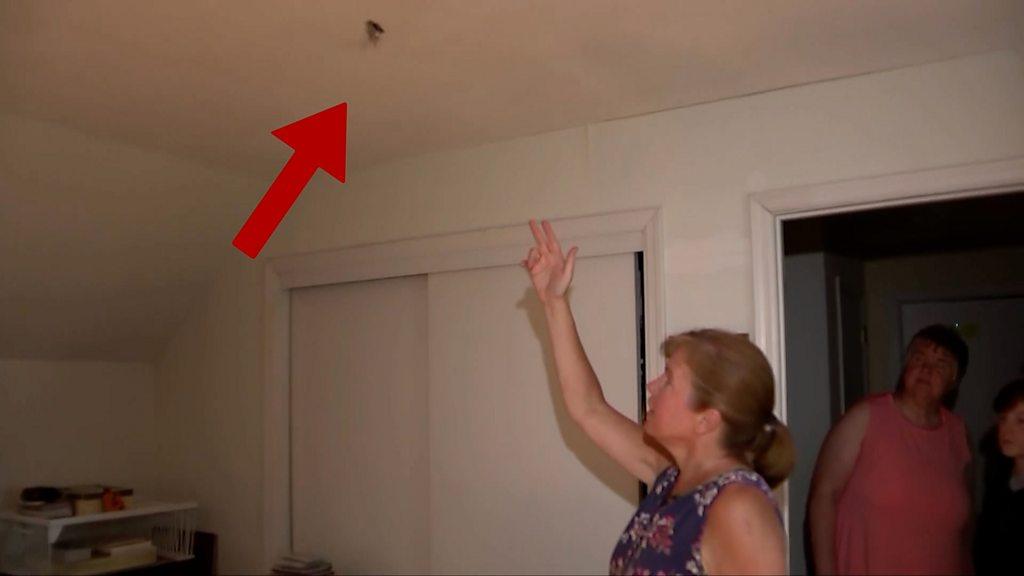Meteorite hunters race to find rock for $25k reward
- Published

The Maine Mineral and Gem Museum is home to the world's largest collection of lunar meteorites
A US museum is offering $25,000 (£19,986) to anyone who can provide a fragment of a meteorite that landed near the US-Canada border in April.
On 8 April, a remote area between Maine and the Canadian province of New Brunswick was the landing site of an "incredibly rare" bright fireball.
The hefty reward will go to the "first 2.2 lb (1kg) specimen" from the meteor shower, the museum said in a statement.
The cash prize has caught the attention of local meteorite hunters.
The reward, put up by the Maine Mineral and Gem museum in Bethel, has been up for grabs since 12 April, after the fireball was spotted streaking through the sky above the US state of Maine four days earlier.
The meteorites are projected to have landed in an area by the US-Canada border between Waite, Maine and Canoose, New Brunswick.
The museum said the cash prize will be open to both Canadians and Americans. It is also offering to buy any other pieces of meteorite rock recovered from the 8 April event.
Those who believe they have found a meteorite rock can bring it to the museum for testing.
The prize has galvanised both locals and seasoned meteorite hunters, but the search has proven to be difficult and fruitless so far.

Meteorite hunter Roberto Vargas said he has searched the area twice for meteorites, but has not had any luck so far
Roberto Vargas, a Connecticut-man who has been meteorite hunting since 2019, said he has tried to search for a meteorite in the area twice, but the terrain proved to be a challenge.
"It's heavily wooded, it's super muddy," Mr Vargas told the BBC. He added that several others have gone out to search since April, but nothing has yet been found.
Mr Vargas does plan to return and search for a third time, hoping he will get lucky. As someone who gave up their day job to search for meteorites full-time, he said there is no feeling quite like holding a rare rock from space.
His hunts so far have taken him as far as France, Germany and Costa Rica.
"It's crazy that you can get on a plane and go somewhere and hold a piece of a meteorite that was in space five or six days ago," Mr Vargas said. "There is no feeling like that."
The event was seen in broad daylight, the museum said at the time.
"When a fireball is sufficiently bright to be seen in broad daylight, it would have been extraordinarily bright had this been at night," said Darryl Pitt, the chair of the Meteorite Division at the Main Mineral and Gem museum.
Mr Pitt added that Nasa spotted radar data of meteorites descending from the sky as the fireball was making its landing.
"(This) assures us there are meteorites waiting to be found," he said. These are specialised radar that produce velocity data about objects at a distance.
The Maine museum is home to the largest Martian meteorite on Earth, weighing 14.5 kilograms, and houses the largest collection of moon rock meteorites in the world.
How to tell if a rock is a meteorite
Meteorites are incredibly rare, but not impossible to find.
There are four key ways to tell if a rock is just an ordinary earthly object or an item from outer space, according to scientists at the University of Alberta, which houses its own meteorite collection.
Check if the rock feels heavy, as meteorites are dense and feel heavier than most other rocks
Test if the rock has magnetic ability using a fridge magnet, as nearly all meteorites have iron-nickel metal that attracts magnets easily
Check for holes or bubbles on the rock's surface, as meteorites usually do not have those
Check if the outer layer of the rock is a thin, black, eggshell-like crust, as the surface of a meteorite melts when it falls through the earth's atmosphere, forming what is known as a fusion crust
Watch: Family stunned by possible meteorite crashing through roof
Related topics
- Published31 January 2023

- Published14 February 2023

- Published10 May 2023
